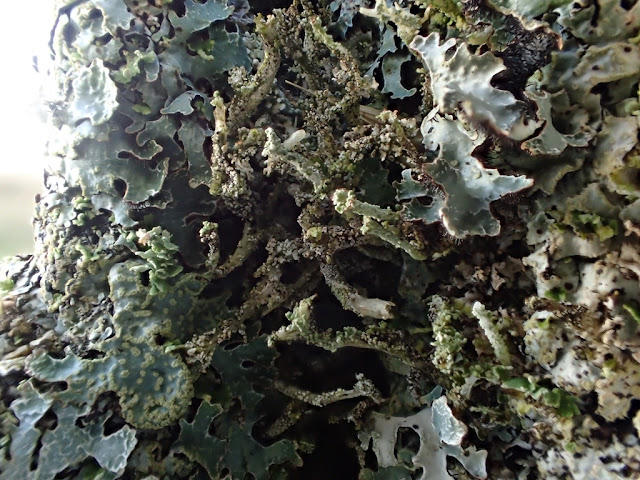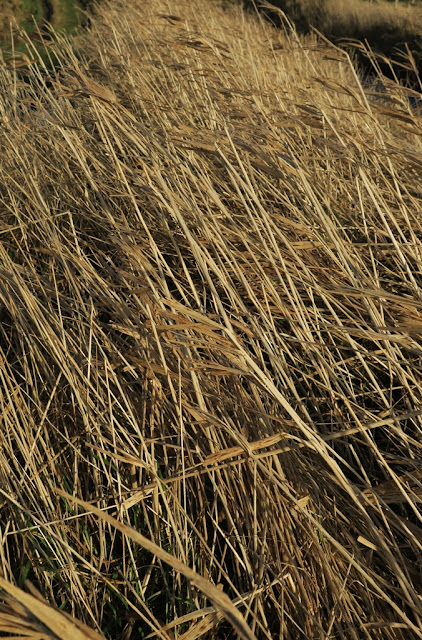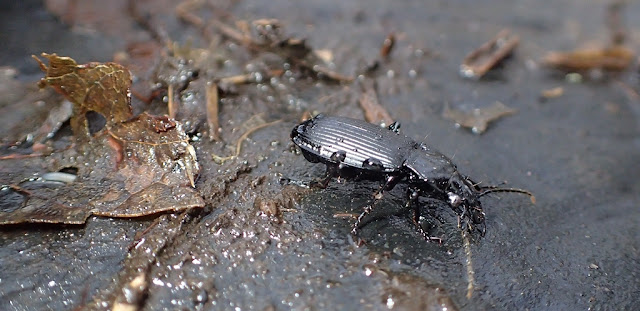Usually we've got the hatches battened etc but I think we've become a bit lackadaisical, the forecast was not too scary anyway, gusting 60+. So woke up to find the shed door somewhat detached from the shed and the conservatory (that's a flattering name for it) with bits of missing glass and broken wood. A day of repairs, I'd planned litter extraction activities.... Anyway, patched up now. At least we don't have water issues, have had that once in a previous home where disaster was just averted by manic ditch clearing.
Two good bird species in the last few days, a Water Rail was flushed by doggy persistence on Friday, well done hound! And yesterday eight Lapland Bunts were likely flushed by dogged quartering of the bird crop field.They appeared calling above my head anyway. Six seen again, briefly today.
Perplexed by lichens again. I've done the easy ones so now they're harder to find and much harder to id. Dobson is an amazing book but it takes an understanding of a whole lichen vocabulary to really be able to use it, slow learning. If you can identify any of the following please let me know...
Another fence stave - Cladonia sp.
Cladonia sp on a fence stave.
Close up of the one below with barbed wire for scale. Theses are of Physcia probably adcendens but could be tenella (thanks BH),
This to give scale to the image above.
Same as above I think.
Think I know these, Parmelia sulcata and Ramalina (maybe fraxinea).
And an interesting moss on the concrete strainer. (Barrie, help!) - Grimmia pulvinata (thanks again BH).
Managed to eventually find Leistus fulvibarbis, a favourite Carabid that is quite common here.
Not the best pic.
Brown House Moth from the bathroom, third moth species of the year.
Slightly mangled Sylvicola fenestralis, (could just be cinctus).
Trichocera regelationis
A couple of Staphylinidae I was working on disintegrated under my clumsy hands, there were just 3mm long, so no id there.
Here's an album recommendation - Charles Watson "Now that I'm a River" modern hippie stuff, a bit like the very best of Jonathan Wilson.
Hare skeleton
Rooks to roost
The burn.
Reed Canary Grass
Small world.














































